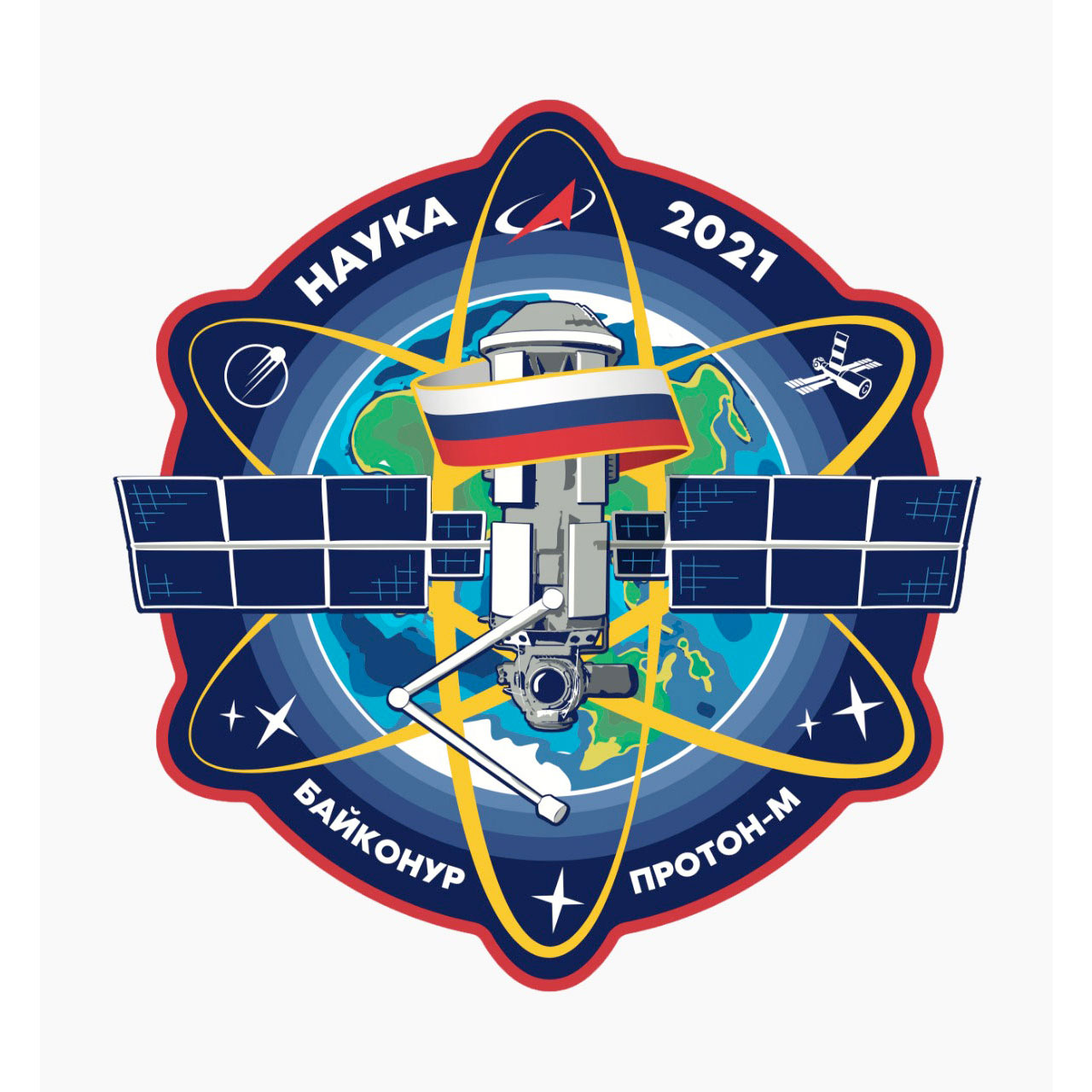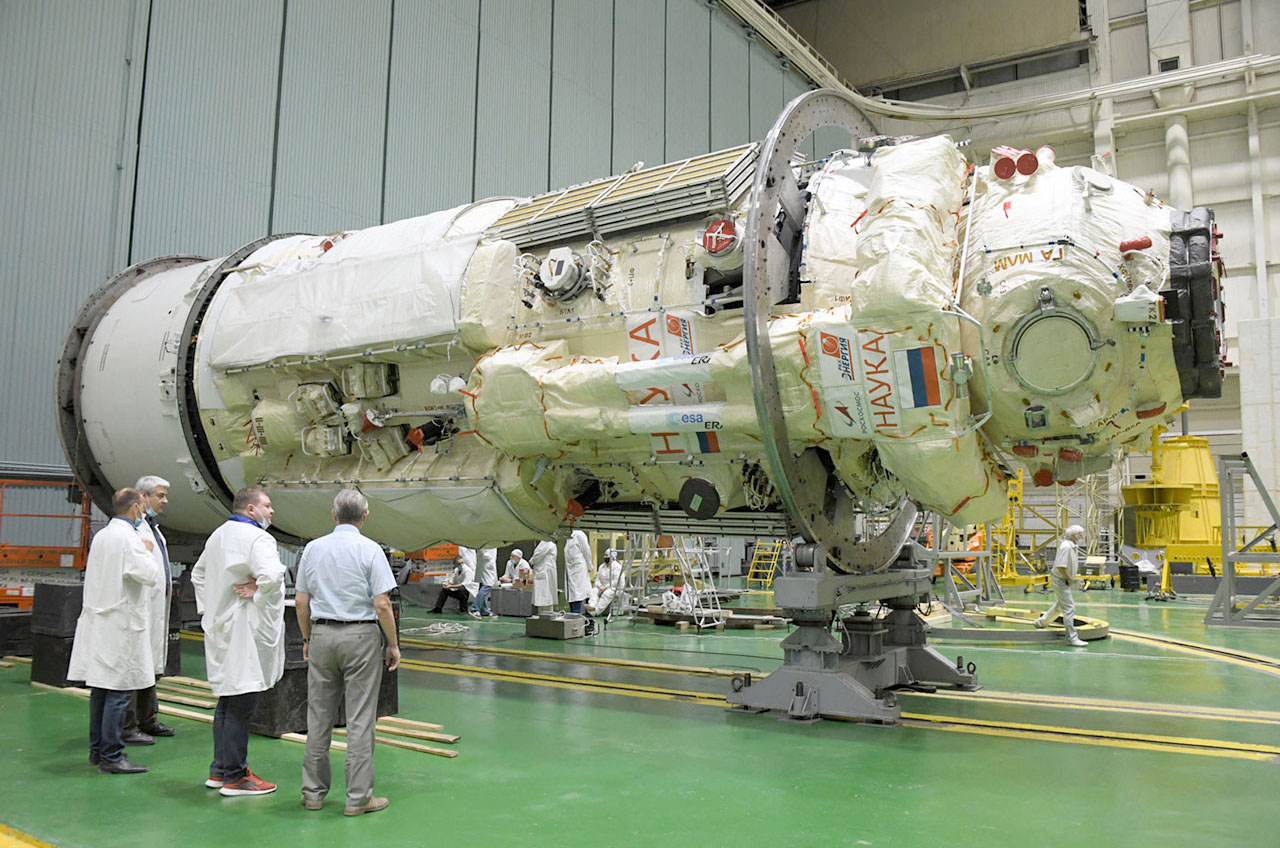Russia's Nauka multipurpose lab module docks to space station
The International Space Station has gained a new room after a 13-year wait for its launch and a week-long journey in Earth orbit.
Russia's Multipurpose Laboratory Module (MLM), named "Nauka" ("Science" in Russian), docked to the space station on Thursday (July 29), eight days after its more-than-decade-long delayed launch. The 22-ton (20-tonne) MLM connected with the orbiting complex at 9:29 a.m. EDT (1329 GMT), using an open port that was recently vacated by the Pirs docking compartment on the Earth-facing side of the Zvezda service module.
Related: International Space Station at 20: A Photo Tour
"Congratulations, that was not an easy docking," Russia's mission control radioed cosmonaut Oleg Novitsky, who monitored the approach from on board the space station.
Now secured in place by hooks and latches, the 43-foot-long by 14-foot-wide (13 by 4.3 meters) Nauka will live up to its name, providing expanded science capabilities for the Russian segment of the station, as well as fulfilling multiple other purposes.
"It will provide roll control for the International Space Station; it will provide propellant transfer between the Progress vehicles — the unpiloted cargo ships — that will arrive in the months and years to come; and it will serve as a docking port for piloted Soyuz and unpiloted Progress vehicles," NASA commentator Rob Navias said of the new module. "It will also serve as a docking port for a node module — a multi-hatched docking port — that is to be launched by the Russians later this year for additional vehicles and components to be attached to it, as the ever-expanding Russian segment of the International Space Station continues."
The Nauka module also delivers and will serve as a base of operations for the European Robotic Arm, a 36-foot-long (11-m) manipulator built by the European Space Agency (ESA) to become the first exterior-mounted appendage designed specifically to service the Russian segment of the station. The module will also provide an additional crew quarters, a new toilet and water and oxygen regeneration equipment, improving the conditions of cosmonauts' stays on the station and increasing the safety of the entire International Space Station crew.
Breaking space news, the latest updates on rocket launches, skywatching events and more!
Launched on July 21 atop a Proton-M rocket from the Baikonur Cosmodrome in Kazakhstan, the MLM conducted six corrective maneuvers, firing its engines to refine its approach to the space station. The eight-day rendezvous also provided the time for Russian flight controllers to test the module's communication antennas and its automated Kurs docking system, which were in use on Thursday.
It was only after Nauka was known to be in good working order that Roscosmos, Russia's state space corporation, proceeded with detaching the Pirs docking compartment to free the port on Zvezda for Nauka's arrival. The nearly 20-year-old Pirs, guided by an uncrewed Progress cargo spacecraft, was destroyed during its re-entry into Earth's atmosphere on Monday (July 26).
Developed jointly by RSC Energia, the prime contractor for Russia's activities in space, and the Khrunichev State Research and Production Space Center, a division of Roscosmos, the Nauka module was based on the design of Russia's Almaz and Salyut space stations of the 1970s, leading up to the Zarya functional cargo block (FGB) and its backup for the International Space Station.
Originally targeted for launch in 2007, a series of technical issues delayed Nauka's deployment more than 13 years.
Nauka now joins four other pressurized modules to comprise the Russian segment of the International Space Station. In addition to the Zvezda service module and Zarya FGB, the segment also has two mini-research modules, Poisk and Rassvet. Nauka is Russia's largest contribution (by size) to the station and the country's first new addition since 2010.
Together with the U.S. operating segment, the space station now has a total of 14 pressurized modules.
Follow collectSPACE.com on Facebook and on Twitter at @collectSPACE. Copyright 2021 collectSPACE.com. All rights reserved.

Robert Pearlman is a space historian, journalist and the founder and editor of collectSPACE.com, a daily news publication and community devoted to space history with a particular focus on how and where space exploration intersects with pop culture. Pearlman is also a contributing writer for Space.com and co-author of "Space Stations: The Art, Science, and Reality of Working in Space” published by Smithsonian Books in 2018.
In 2009, he was inducted into the U.S. Space Camp Hall of Fame in Huntsville, Alabama. In 2021, he was honored by the American Astronautical Society with the Ordway Award for Sustained Excellence in Spaceflight History. In 2023, the National Space Club Florida Committee recognized Pearlman with the Kolcum News and Communications Award for excellence in telling the space story along the Space Coast and throughout the world.





